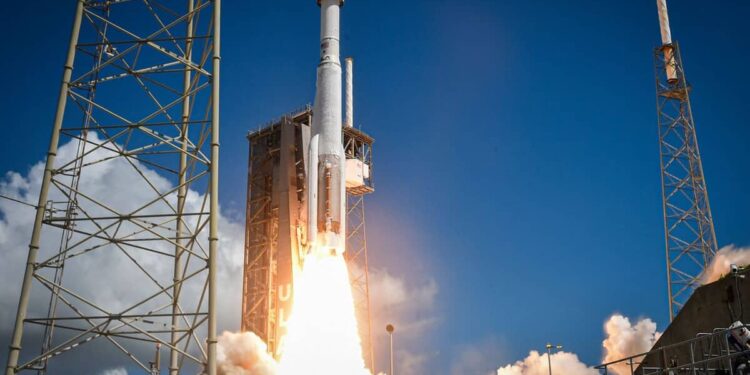The Starliner spacecraft, docked at the International Space Station (ISS) since June 6, is due to return to Earth from the 26th, officials from the space agency (Nasa) and the American aircraft manufacturer said on Tuesday.
• Read also: The first Starliner astronauts finally arrived on the ISS
• Read also: Starliner manages to dock despite delay linked to propulsion problems
• Read also: Boeing’s Starliner spacecraft has finally taken off with its first astronauts to the ISS
The stay on the ISS of the two astronauts transported by Starliner was supposed to last eight days, but was extended due to propellant problems and helium leaks.
This first-ever crewed Starliner mission aims to demonstrate that this vehicle is safe to begin regular space taxi operations.
At a press conference, officials said Tuesday that the two astronauts, Butch Wilmore, 61, and Suni Williams, 58, will not return to Earth until June 26.
“We want our teams to have a little more time to check the data, do some analysis and make sure we’re really ready to go back,” NASA’s Steve Stich said.
According to Mark Nappi of Boeing, the propellers now have “a good level of performance” and “leaks are stabilized and less significant”.
The ship took off from Florida on June 5, years late and several last-minute postponements.
If all goes well, it will leave the ISS on June 26 at 02:10 GMT for a planned landing in New Mexico, in the southwest of the United States, at 08:51 GMT.
Its thermal shield must resist external heat which can reach up to around 1,650°C.
This high-speed re-entry of the capsule is the last critical stage of this test mission.
Starliner represents a major challenge for the aeronautical giant Boeing, which is also facing production quality problems in its commercial aviation branch.
In 2014, NASA ordered two new vehicles from Boeing and SpaceX, Elon Musk’s company, to transport its astronauts to the ISS. But if SpaceX has been playing this role of space taxi for four years now, Boeing’s program has experienced multiple disappointments and fallen behind schedule.
Once Starliner is operational, NASA wants to alternate between SpaceX and Boeing flights.



